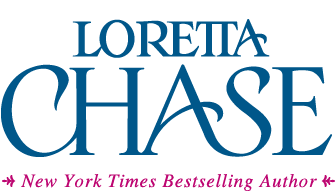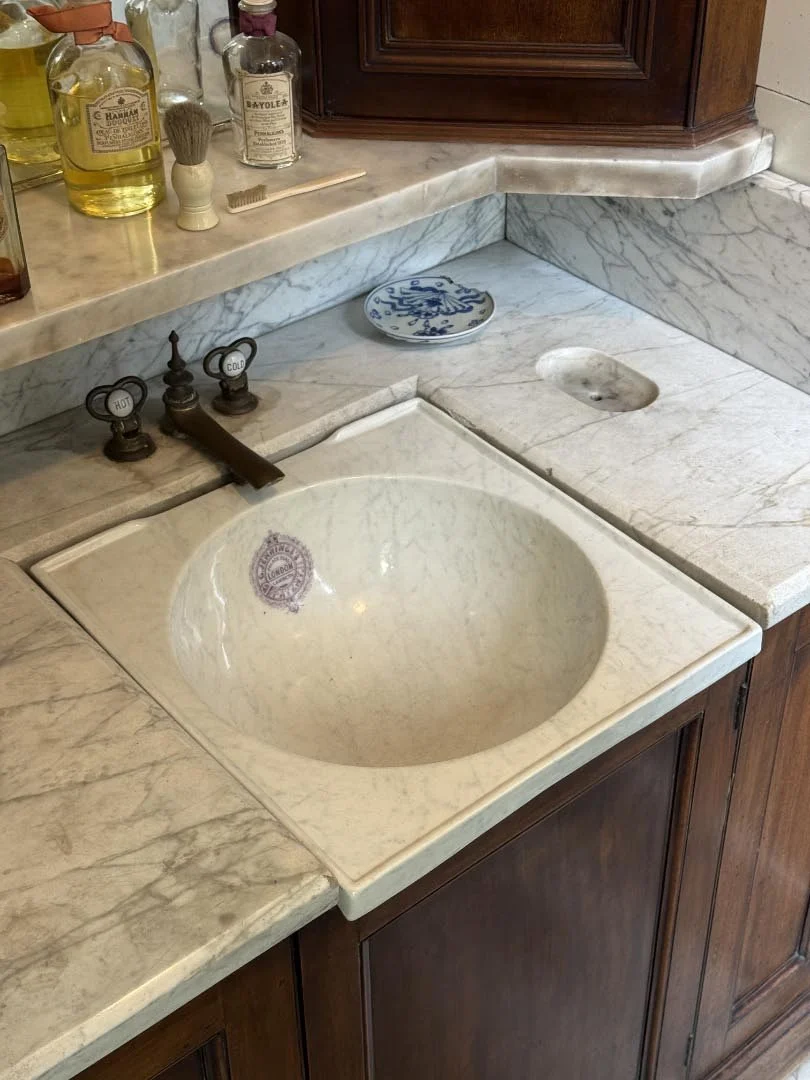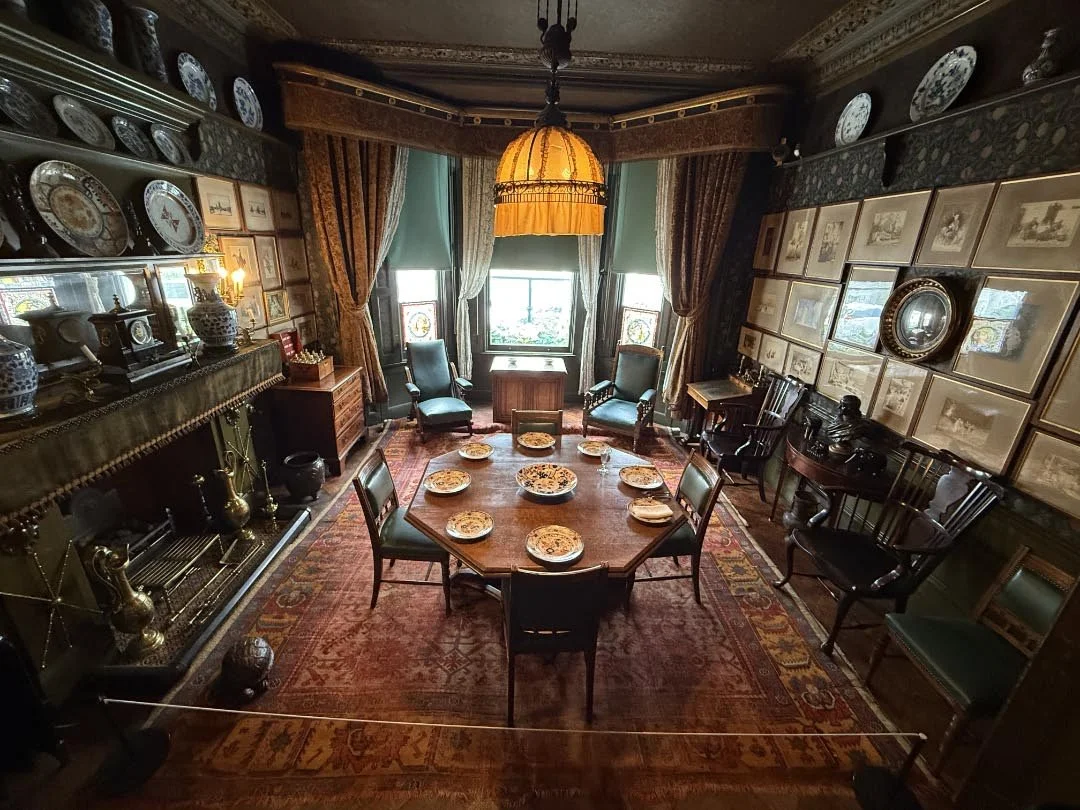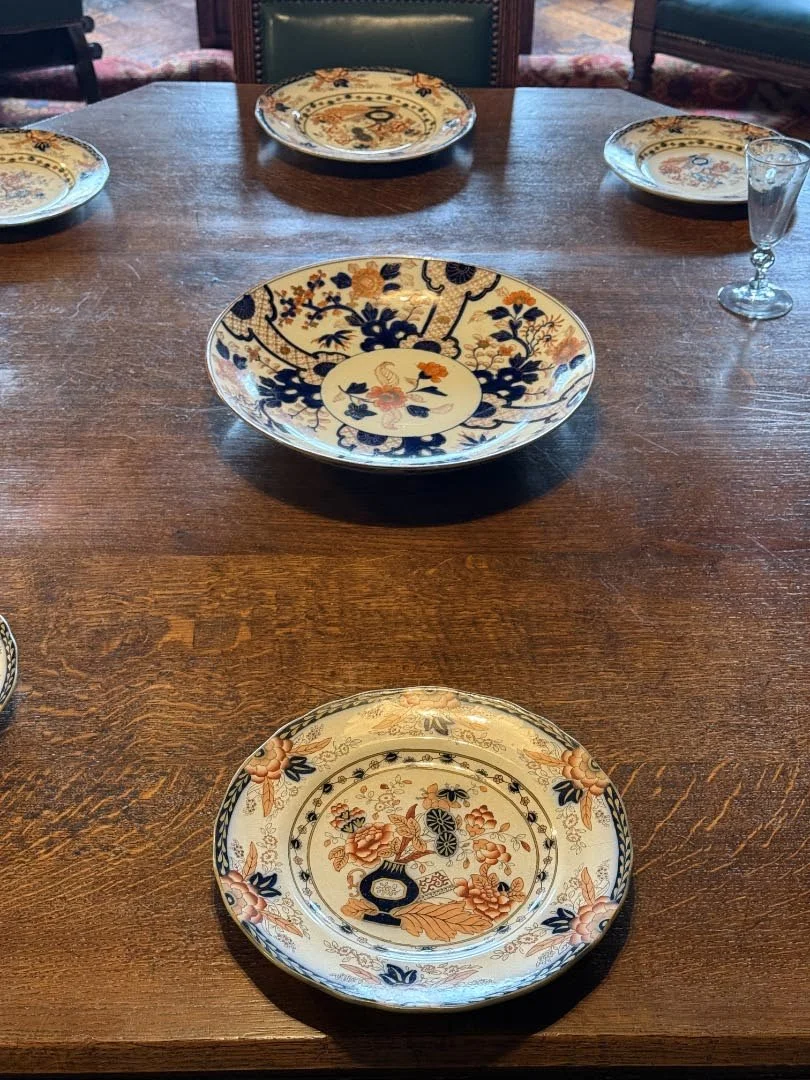Linley Samburne House, 18 Stafford Terrace, Kensington, London
Note: If you receive this post via email, and are unable to view the videos, please click through to the blog itself.
What first struck me about the Linley Sambourne House was the time capsule element. What next struck me was the contrast between it and the nearby Leighton House Museum.
Edward Linley Sambourne (but nobody ever called him by his first name) was a famous Victorian era illustrator, perhaps best known for his work for the satirical magazine, Punch. While both he and Leighton were artists living in an enclave of artists and writers in Kensington, their work, circumstances, and abodes were altogether different.
The house at No. 18 Stafford Terrace was a revelation. We had been staying in a flat in a Victorian-era house. Ours, like so many, had retained only a few of its original features—which makes sense, given the development of things like indoor plumbing, electricity, etc., since the 1850s (when many of these houses were built in Kensington).
However, at Sambourne House, thanks to Mr. Sambourne’s descendants, time stands still for the most part, allowing us to time travel to a middle-class Victorian household. While this was the home of an artist, and reflects that fact, the layout and a great deal of the decoration reflects the taste of the time. And it gave me, finally, a clear sense of the way a London townhouse would be laid out in the 19th century. Yes, I look at floor plans and photos, but nothing compares to being there, and a little imagination allows one to extrapolate from the 1870s to the 1830s.
Since the house was so interesting, and rather like Ham House, a rare survivor, I have many images, which means our tour will be in two parts.
The lavatory under the stairs is a great example of the time capsule element. In most houses, areas like this have been modernized. Also, the level of design was so impressive. The Victorians and their predecessors wanted everyday items to be beautiful as well as functional.
This reel takes us through the entrance hall into the dining room.
The dining room is much as it was in 1877, and like so many other parts of the house, needs video to truly give you a sense of the place.
Collecting the blue and white porcelain plates was a fashion craze among artists in the 1870s. The glass case fitted to the window is a rare survivor. Cultivating ferns and other plants in these cases was another Victorian fashion. Similar cases were once attached to the Drawing Room windows on the floor above—which I’ll get to in the next blog post.
The Morning Room reel completes our tour of the ground floor. This was primarily Marion Sambourne’s domain. This wall, like that of the Dining Room, is divided into three tiers, and the faded paper comes closest to showing what the house would have looked like in the 1870s. Right after purchasing the house, the Sambournes knocked out the rear wall and installed the beautiful window.
In the next blog post, we’ll look at the first and second floors (U.S. second and third floors ).












